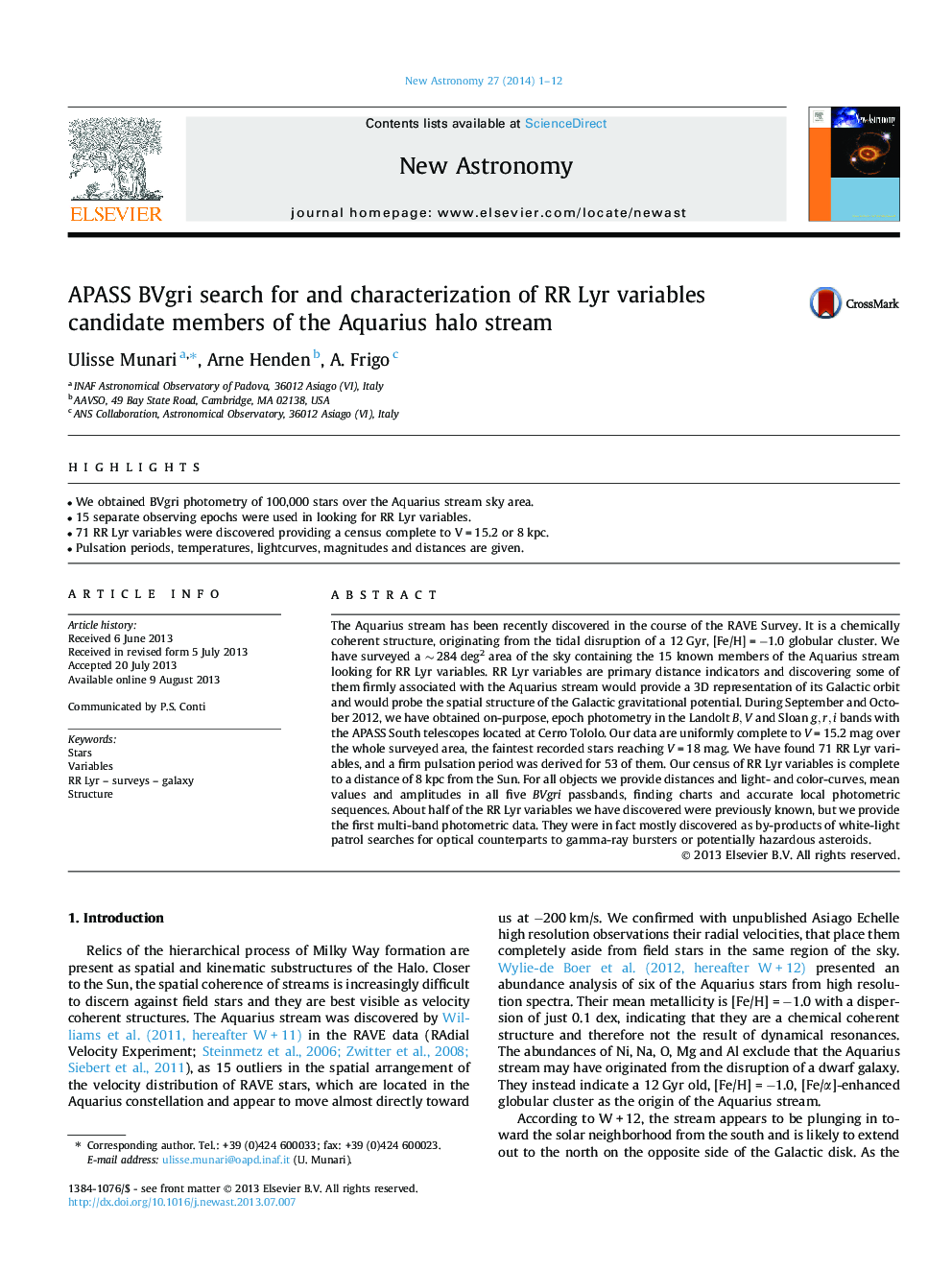| Article ID | Journal | Published Year | Pages | File Type |
|---|---|---|---|---|
| 1779044 | New Astronomy | 2014 | 12 Pages |
•We obtained BVgri photometry of 100,000 stars over the Aquarius stream sky area.•15 separate observing epochs were used in looking for RR Lyr variables.•71 RR Lyr variables were discovered providing a census complete to V = 15.2 or 8 kpc.•Pulsation periods, temperatures, lightcurves, magnitudes and distances are given.
The Aquarius stream has been recently discovered in the course of the RAVE Survey. It is a chemically coherent structure, originating from the tidal disruption of a 12 Gyr, [Fe/H] = −1.0 globular cluster. We have surveyed a ∼ 284 deg2 area of the sky containing the 15 known members of the Aquarius stream looking for RR Lyr variables. RR Lyr variables are primary distance indicators and discovering some of them firmly associated with the Aquarius stream would provide a 3D representation of its Galactic orbit and would probe the spatial structure of the Galactic gravitational potential. During September and October 2012, we have obtained on-purpose, epoch photometry in the Landolt B,VB,V and Sloan g,r,ig,r,i bands with the APASS South telescopes located at Cerro Tololo. Our data are uniformly complete to V = 15.2 mag over the whole surveyed area, the faintest recorded stars reaching V = 18 mag. We have found 71 RR Lyr variables, and a firm pulsation period was derived for 53 of them. Our census of RR Lyr variables is complete to a distance of 8 kpc from the Sun. For all objects we provide distances and light- and color-curves, mean values and amplitudes in all five BVgri passbands, finding charts and accurate local photometric sequences. About half of the RR Lyr variables we have discovered were previously known, but we provide the first multi-band photometric data. They were in fact mostly discovered as by-products of white-light patrol searches for optical counterparts to gamma-ray bursters or potentially hazardous asteroids.
